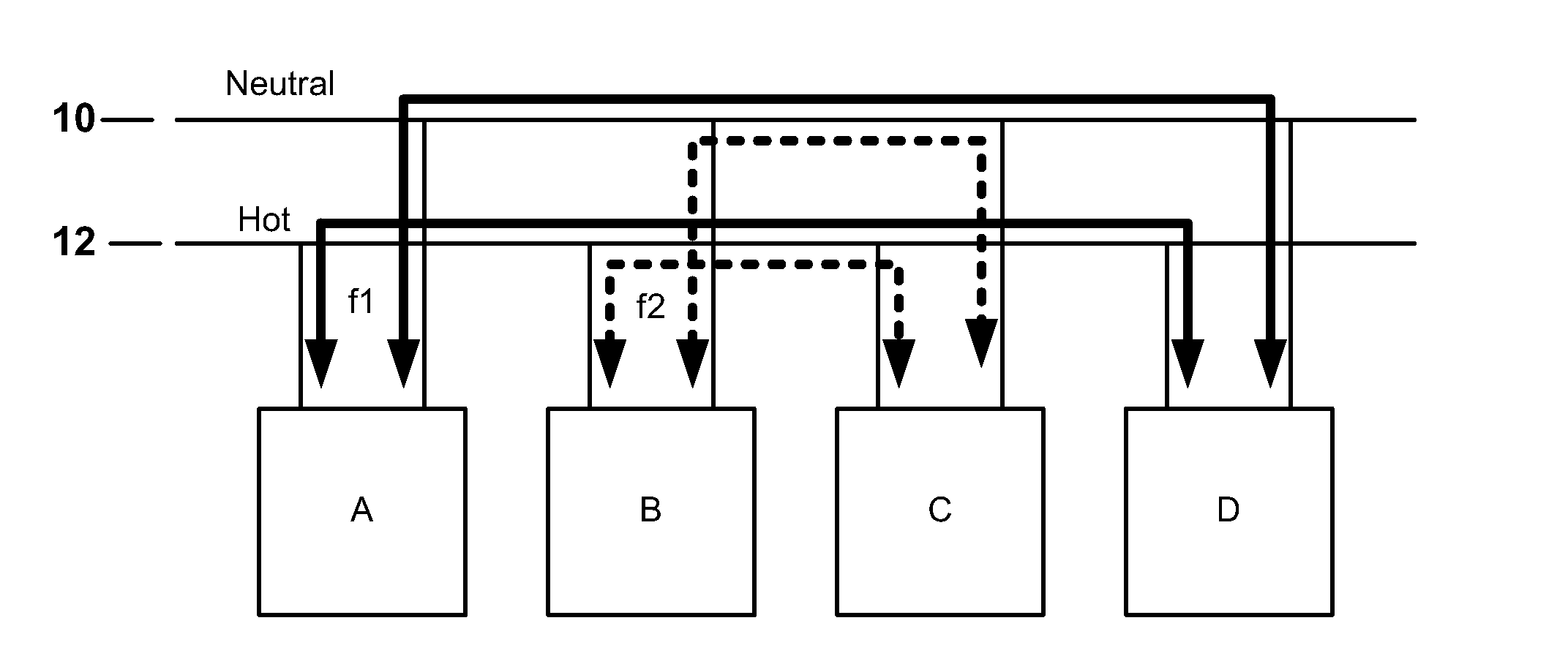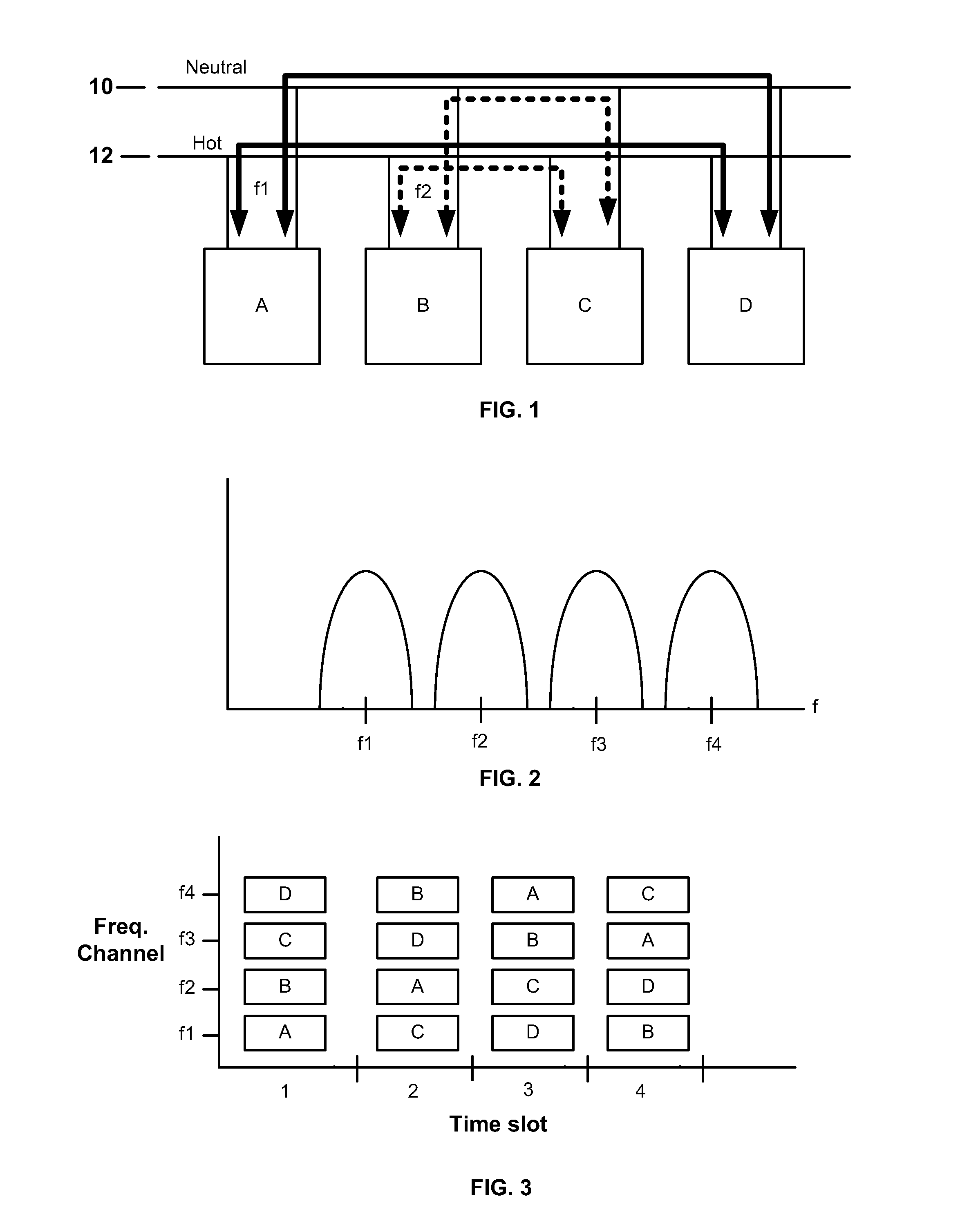Power Line Communication Using Frequency Hopping
a power line and frequency hopping technology, applied in the field of advanced metering infrastructure, can solve the problems of power line circuits with only limited ability to carry higher frequencies, circuits may be many miles long, and propagation problems are limiting factors
- Summary
- Abstract
- Description
- Claims
- Application Information
AI Technical Summary
Problems solved by technology
Method used
Image
Examples
Embodiment Construction
[0029]In accordance with the embodiments described hereinafter, the available spectrum on the power lines for the carrier signals is divided into several non-overlapping channels, so that communication between pairs (or groups) of nodes, e.g., meters, can, by simple selection of different channels, occur simultaneously. An exemplary implementation is shown in FIG. 1. A first pair of nodes, A and D, which communicate via power lines 10 and 12, do so via a first carrier frequency f1, depicted by the heavy solid lines. A second pair of nodes, B and C, communicate with each other at the same time via a second carrier frequency f2, as shown by the broken lines. Although only two nodes are involved in each set of communications in the example shown, it will be appreciated that a node can transmit to multiple nodes simultaneously at the designated frequency.
[0030]FIG. 2 is a frequency spectrum chart showing the separate non-overlapping frequency channels for the carrier signal. In the illu...
PUM
 Login to View More
Login to View More Abstract
Description
Claims
Application Information
 Login to View More
Login to View More - R&D
- Intellectual Property
- Life Sciences
- Materials
- Tech Scout
- Unparalleled Data Quality
- Higher Quality Content
- 60% Fewer Hallucinations
Browse by: Latest US Patents, China's latest patents, Technical Efficacy Thesaurus, Application Domain, Technology Topic, Popular Technical Reports.
© 2025 PatSnap. All rights reserved.Legal|Privacy policy|Modern Slavery Act Transparency Statement|Sitemap|About US| Contact US: help@patsnap.com


